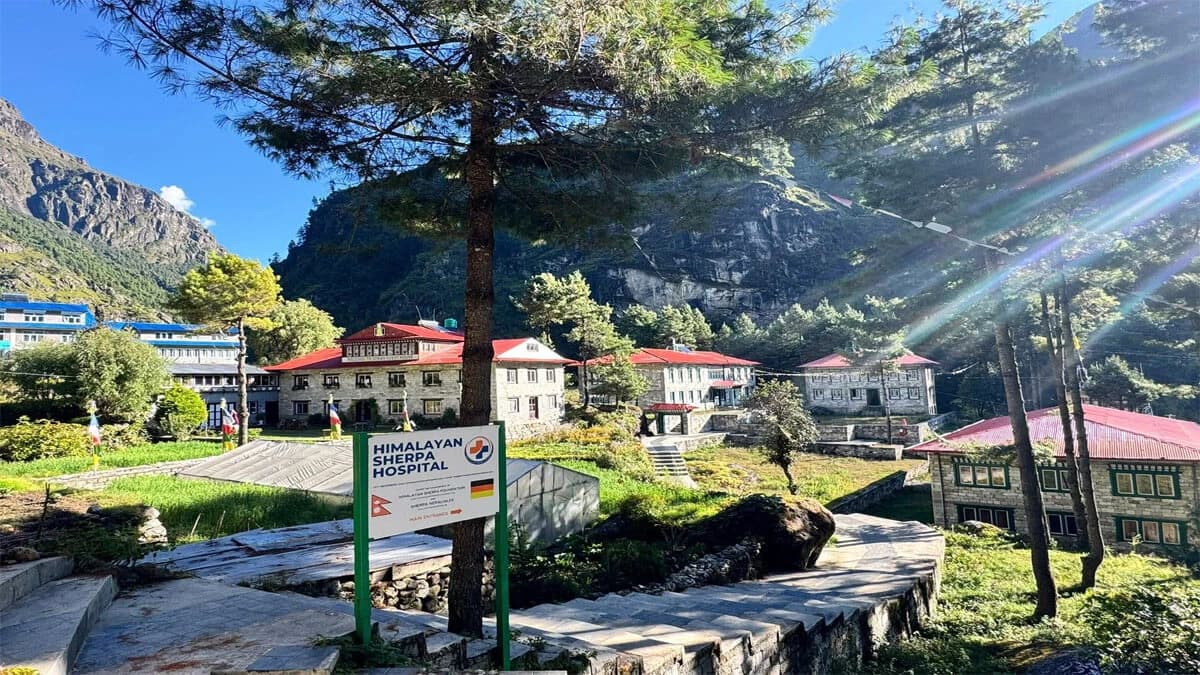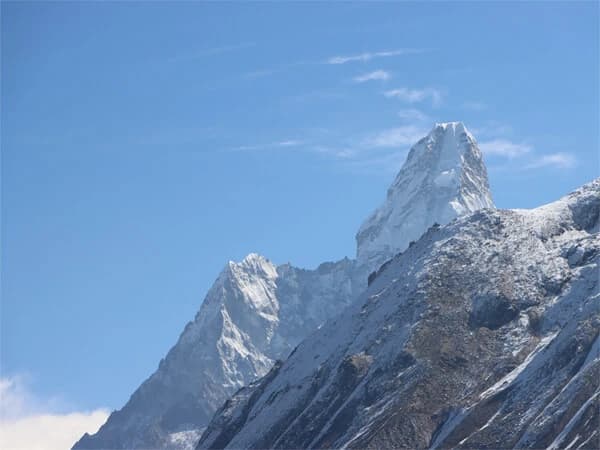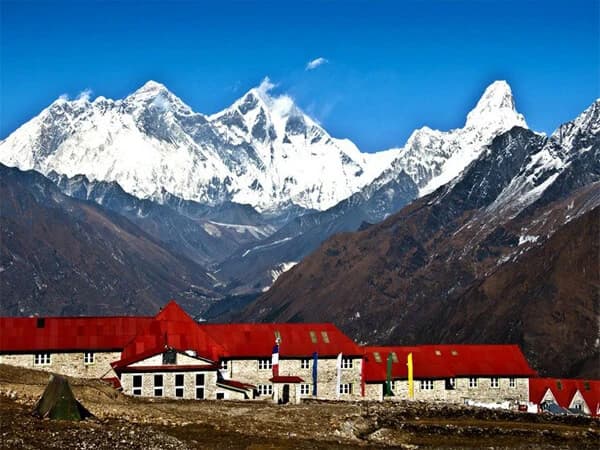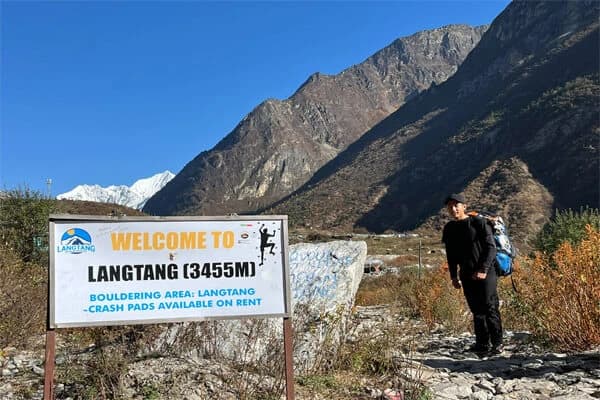The Everest View Trek difficulty ranges from simple to moderate, making it excellent for beginners trekkers, families, and travelers looking for a brief Himalayan adventure. The journey reaches a maximum altitude of 3,880 meters at Tengboche Monastery, providing beautiful vistas of Mount Everest, Ama Dablam, and other peaks without the severe exertion necessary on higher climbs. The trails are well-maintained, with modest ascents and acceptable daily lengths, while cultural experiences in Sherpa settlements enrich the tour. Proper planning and mild fitness exercise are recommended.
How Difficult is Everest view trek?
The Everest View Trek difficulty is frequently categorized as simple to moderate when compared to other treks in Everest region. Unlike the long and strenuous trekking route to Everest Base Camp, this trek is intended for individuals who want to see Himalayan grandeur without traveling too high or far. The trek's highest point is Tengboche Monastery at 3,880 meters, therefore altitude is less of an issue for most travelers. The paths are well-defined, with modest ascents and descents, making them ideal for novices, families with children, and even elderly trekkers looking for a relaxing journey.
This trek's appeal comes from its blend of cultural experiences and scenic pleasures. Trekkers can take in panoramic views of Everest, Lhotse, Ama Dablam, and Thamserku while passing through Sherpa settlements, rhododendron forests, and monasteries. The walk lasts approximately 5 to 7 days, making it ideal for a short vacation itinerary. It is an excellent choice for travelers who want to experience the Everest region without committing to a lengthier high-altitude trek. In this article, we will look at the difficulty of the Everest View Trek and why it is such a popular choice among adventurers.
Everest View Trek Difficulty Level
A Beginner-Friendly Trek
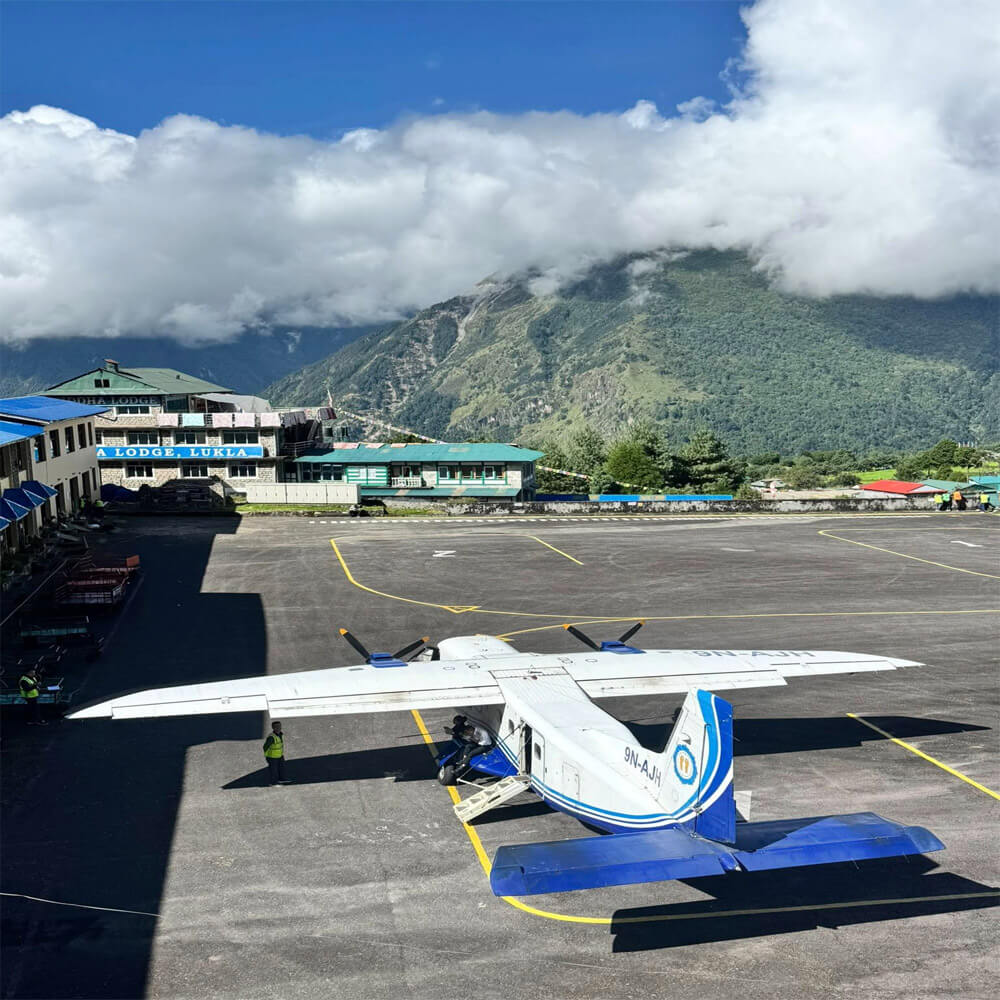
When tourists ask about the difficulty of the Everest View Trek, one of the first things they learn is that it is one of the easier trekking routes in the Khumbu region. Unlike the Everest Base Camp journey, which lasts more than two weeks and goes above 5,000 meters, the Everest View hiking journey stays below 4,000 meters, with the highest point being Tengboche Monastery (3,880 meters). This lower altitude makes it easier for beginners and lowers the risk of severe altitude sickness.
Altitude Challenges and Acclimatization
Although the trek is relatively easy, the high Himalayan scenery should not be overlooked. Even at 3,880 meters, some trekkers may experience mild symptoms of altitude sickness, such as headaches or dizziness. The shorter itinerary implies fewer acclimatization days, but trekkers should still walk slowly, keep hydrated, and pay attention to their bodies. Rushing or failing to follow good pacing increases the overall difficulty of the Everest View Trek.
Trail Conditions and Walking Hours
The trails are well-established because they are part of the primary trekking route to Everest Base Camp. Most days require 4-6 hours of walking, with modest ascents and descents. The pathways run through forests, suspension bridges, and Sherpa settlements, making the climb varied but not too demanding. Compared to other Everest trekking, the climbs are shorter and the rest stops are more frequent, lowering the challenge.
Seasonal Factors Affecting Difficulty
The Everest View Trek's difficulty varies depending on the season. Spring (March-May) and autumn (September-November) provide consistent weather, clear skies, and dry trails, making the walk relatively straightforward. However, in the winter, snow and ice may cover portions of the trail, necessitating extra caution. Rainfall throughout the summer (monsoon season) can make pathways muddy and slippery, making the task more difficult.
Overall Difficulty Assessment
In conclusion, the Everest View Trek is best classified as easy to moderate. It is ideal for families, senior explorers, and first-time trekkers who want to view Everest without the strenuous trials of higher elevations. Most travelers will find the walk both possible and deeply satisfying if they maintain a steady pace, prepare well, and are environmentally conscious.
Physical Fitness for Everest View Trek
General Fitness Requirements
Even though many people can complete the walk, a respectable level of physical fitness is still necessary. Although the Everest View Trekking is not particularly tough, trekkers should expect to go uphill and downhill for several hours each day. Prior to the trek, a daily walking, light running, or cycling regimen helps increase stamina and enhances the experience.
Preparing for Strength and Endurance
Although professional athletic ability is not required for the trek, it is advantageous to increase leg strength and endurance. Exercises that prepare the body for the uphill portions include stair climbing, lunges, and squats. Strength in the shoulders and back is particularly helpful because trekkers will be carrying daypacks filled with necessities like water, snacks, and additional clothing. The Everest View Trek difficulty feels less like a struggle and more like a fun challenge with these preparations.
Suitability for Families and Older Trekkers
The fact that this walk is appropriate for a broad spectrum of age groups is one of its distinctive features. Older trekkers with a moderate level of fitness and children accustomed to walking can easily finish the course. Families frequently find that the walking hours strike the ideal balance between comfort and adventure because they are shorter than those of longer excursions. Everyone can take in the vistas without feeling too exhausted thanks to the Everest View Trek comparatively easy difficulty.
Mental Preparation and Patience
Trekking requires mental preparedness in addition to physical strength. Trekkers can expect to trek at a leisurely, steady pace, deal with unpredictable weather, and stay in teahouses that offer minimal lodgings. A cheerful outlook is crucial in lowering the trek's perceived hardship. When one approaches problems with curiosity and tolerance, they become part of the journey.
Why Fitness Still Matters
Being physically fit improves the experience, even though the walk is frequently characterized as easy. Better endurance allows trekkers to take in the scenery more thoroughly, recuperate more quickly, and experience less exhaustion at the end of the day. Although intense preparation is not necessary, a few weeks of mild exercise can have a significant impact. The Everest View Trek is a moderately demanding trek overall, but being fit guarantees a comfortable and enjoyable trip.
Everest View Trek altitude challenges
Despite the Everest View Trek's generally low to moderate challenge, altitude still influences the experience. Trekkers should be mindful of the effects of altitude on the body even if this journey does not reach the same severe elevations as Everest Base Camp. Let us dissect it into the main ideas:
Maximum Elevation at Tengboche
At 3,880 meters, Tengboche Monastery is the highest point of the Everest View Trek. Although this is significantly lower than Everest Base Camp (5,364 meters), it is nevertheless high enough for some trekkers to experience moderate altitude sickness symptoms including exhaustion, light headaches, or shortness of breath. Proper pace is crucial because at 3,000 meters the body begins to respond to thinner air.
Possibility of Altitude Symptoms
Despite the shorter walk, altitude difficulties are unavoidable. Some trekkers may experience changes in their breathing or sleeping patterns, particularly if they are new to high-altitude trekking. Rest, water, and a leisurely gait can help you manage these symptoms, which are typically transient. There is virtually little chance of developing severe altitude sickness on this route, in contrast to treks over high passes or base camps.
How to Handle Altitude on the Trek
Gradual acclimatization is the most effective strategy for overcoming altitude difficulties. As you rise steadily from Lukla to Namche Bazaar and finally to Tengboche, the trek schedule naturally gives your body time to adapt.
Trail Conditions on the Everest View Trek
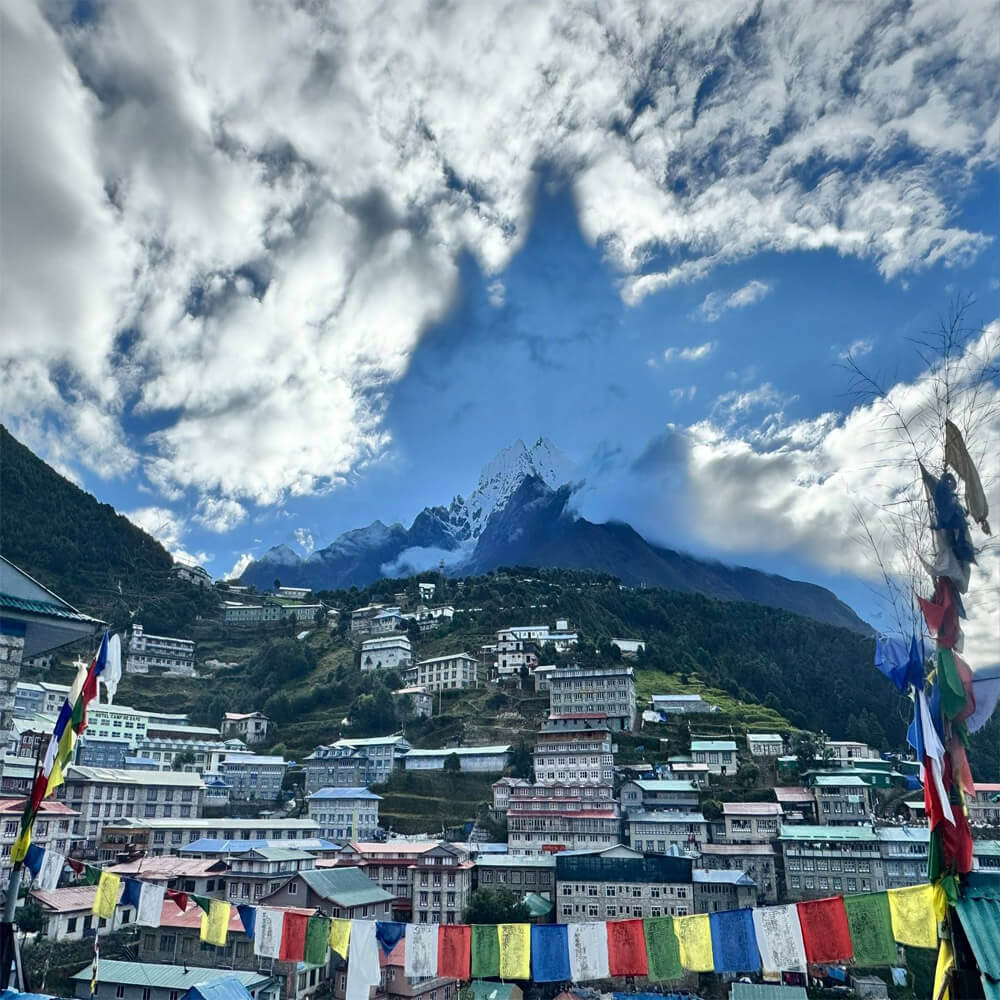
The trail conditions have a significant impact on the difficulty of the Everest View Trek. This walk is quite mild and well-maintained in contrast to some of the more difficult and steep Himalayan climbs. Because the paths are well-marked and often used by both locals and trekkers, they remain in good condition for the majority of the year. Trekkers should still anticipate ups and downs, stone steps, and rough footing in some areas because the landscape is mountainous. Let us examine the trail conditions in more detail under two headings: accessibility and comparability to previous Everest trips.
Accessible and Comfortable Trails
Beginner-friendly trails are part of the Everest View Trek. The majority of the paths have gentle slope instead of steep climbs and are sufficiently wide for comfortable walking. The route goes through communities like Namche Bazaar and Phakding, where stone steps and suspension bridges facilitate easy river crossings. Even though there will be some uphill parts, particularly as you get closer to Namche, most persons with a moderate level of fitness can handle the challenge. Along the route, there are frequent rest areas and tea houses that offer comfort and further humanize the journey.
Comparison with Challenging Everest Treks
The Everest View trek is much less difficult than treks like the Everest Base Camp orGokyo Lakes trek. Trails at higher elevations may have rough routes, difficult terrain, and lengthy walking distances that need acclimatization and endurance. The Everest View Trek, on the other hand, has less technical difficulty, shorter trekking days, and well-maintained paths. It is more about taking in the landscape and Sherpa culture than it is about pushing your physical boundaries. Because of this, the trek is a great option for novice trekkers or those looking for a more laid-back Himalayan experience.
Weather and Seasonal Difficulty
An important factor in determining the difficulty of the Everest View Trek is the weather. The primary obstacles are frequently seasonal variations rather than the actual terrain because the walk is neither particularly long nor extremely high in altitude. While trekking in challenging weather can provide unforeseen challenges, choose the appropriate season can greatly improve your experience. Let us divide it into two primary sections.
Best time for Everest View Trek Difficulty Encounters
The best time for Everest View Trekis most enjoyable in the spring (March to May) and autumn (September to November) seasons. The skies are typically clear throughout these months, providing breathtaking views of Everest and the other peaks. With mild temperatures and no risk of rain or snow, the weather remains stable. The trails are dry, making trekking easier and safer. Rhododendrons blossom in spring, providing color to the woodlands, while crisp mountain views emerge in October after the monsoon clears the air. These seasons offer the most favorable circumstances for trekkers, reducing weather-related obstacles.
Weather Challenges in Other Seasons
Temperatures in winter (December to February) can decrease dramatically, particularly in Tengboche. Snow can obstruct pathways, making them slippery and more difficult. Summer/monsoon season (June to August) is characterized by excessive rainfall, muddy pathways, and reduced visibility due to clouds and mist. Leeches and landslides can also be a problem in the lower areas. While walking is still doable, these seasons make the Everest View Trek more challenging and necessitate additional preparations, such as waterproof gear and sturdy boots.
Overall, seasonal choices have a significant impact on the trek's difficulty. Choosing the proper time of year lessens physical problems while also allowing you to fully enjoy the scenic and cultural aspects of the tour.
Duration and Daily Walking Hours
The Everest View Trekking is suitable for those seeking a short but rewarding Himalayan trip. With an average duration of 5 to 7 days, it is far shorter than treks like Everest Base Camp or the Gokyo Ri trekking, making it suitable for travelers with limited time. Despite its brief time, the walk provides a comprehensive perspective of the Khumbu region, combining breathtaking mountain views with cultural elements. Understanding the duration and daily walking hours enables passengers to plan their pace, acclimatization, and overall experience.
Typical Daily Walking Hours
Most days on the Everest View Hiking entail walking for 4 to 6 hours, depending on the route and stops along the way. For example, the first day from Lukla to Phakding is a simple 3-4 hours, however the climb from Namche Bazaar to Tengboche can take 5-6 hours owing to progressive elevation gain. The trek's moderate daily distances making it ideal for novices, families, and senior tourists. The moderate walking hours also allow for leisurely sightseeing, mountain photography, and visits to monasteries or small communities.
Flexibility and Rest Days
One benefit of the Everest View Trek is its adaptability. Trekkers can spend rest or acclimatization days at Namche Bazaar or Tengboche to help them adjust to the altitude and learn about local culture. This adaptability means that even people who walk slowly or at a leisurely pace can comfortably complete the journey.
Suitability for Different Travelers
The Everest View Trekking is well-known for being one of the most accessible treks in the Everest region, making it suited for a wide range of visitors. Its moderate difficulty, short duration, and well-maintained routes allow tourists of all ages and fitness levels to enjoy the Himalayan beauty and culture without exerting excessive physical effort.
Family-Friendly Everest View Trek
For families, this walk is great. Children and elder family members can manage daily walking distances of 4 to 7 hours. The trail crosses past Sherpa communities, allowing families to experience native lifestyles and traditions while also enriching their education and culture. Accommodations along the road are excellent, with teahouses serving meals and providing rest areas, making it simple to handle family demands.
The altitude is mild, which reduces the danger of serious altitude sickness; however, basic acclimatization and water are still required. This makes the Everest View hiking a rewarding, safe, and memorable trip for families.
Beginner Best Trekking in Everest Region
For first-timers, the Everest Panorama View Trek is a wonderful introduction to high-altitude trekking. Unlike more arduous routes like Everest Base Camp or Gokyo Ri, this climb does not require advanced mountaineering abilities. The pathways are well-marked, and the incline is gradual, allowing beginners to gain confidence while trekking at altitude. This walk also allows you to see clasic Everest region trek attractions including panoramic vistas of Everest, Lhotse, and Ama Dablam, as well as cultural sites like Tengboche Monastery, without facing the logistical constraints of a lengthier expedition.
The Everest View Trek is ideal for anyone wishing to discover the Himalayas with minimal risk and effort. Whether you are traveling with family, trying your first trek, or looking for a moderate Himalayan adventure, this trek provides a safe, enriching, and wonderful introduction to Nepal Everest region. For beginners and families alike, the journey offers both natural beauty and cultural immersion, making it one of the most accessible and rewarding treks in the area.
Easy Treks in the Everest Region
The Everest region trekking is well-known for its difficult high-altitude treks, but it also has several easy treks that are ideal for beginners, families, and travelers looking for beautiful Himalayan views without great physical exertion. The Everest Panorama View Trekking, which ends at Tengboche Monastery at 3,880 meters, is one of the easiest. The paths are well-marked, the daily walking distance is modest, and the elevation is moderate, making it an excellent choice for first-time trekkers. This walk combines breathtaking Himalayan views with cultural experiences in Sherpa settlements.
Another beginner-friendly alternative is the Gokyo Lake Trek (short version), which takes trekkers to the stunning turquoise Gokyo Lakes without having to cross the Cho La Pass. It offers breathtaking views of Everest, Cho Oyu, and Makalu while avoiding tricky and demanding areas.
Namche Bazaar Treks or Dhudh Kosi Valley Treks include moderate paths, local village excursions, and panoramic mountain beauty in one or two days. These easy treks are ideal for acclimatization, photography, and exploring the culture and landscapes without the burden of long, high-altitude explorations. Trusted operators such as Nepal Trekking Routes can assist you in planning the right simple trek in the Everest region by providing well-organized itineraries and local guidance.
Short Trek to Everest with Moderate Difficulty
A short trek to the Everest region allows visitors to enjoy the magnificence of the Himalayas without committing to lengthy, high-altitude adventures such as Everest Base Camp. One popular alternative is the Everest View Trek, which lasts roughly 5-7 days and reaches a maximum elevation of 3,880 meters at Tengboche Monastery. This journey is deemed moderate in difficulty since the paths are well-maintained and include modest ascents and descents, necessitating basic fitness rather than specialized mountaineering skills.
This path provides trekkers with amazing views of prominent peaks such as Mount Everest, Lhotse, Ama Dablam, and Thamserku. Along the way, the route goes through picturesque Sherpa settlements like Namche Bazaar and Pangboche, where traditional culture, monasteries, and hospitality add to the experience. While the journey is less strenuous than high-altitude treks, tourists should nevertheless prepare with light physical activity and sufficient acclimatization to avoid minor altitude symptoms.
This short, fairly challenging climb is ideal for families, first-time Himalayan trekkers, and those with limited time. Trekkers can experience a safe, well-supported journey that combines nature, culture, and spectacular mountain scenery in a short and easy route with professional supervision from our company, Nepal Trekking Routes.
Preparation Tips for Everest View Trek Difficulty
Even though the Everest View Trek is classified simple to moderate in difficulty, adequate preparation ensures a safe and pleasurable experience. You are able to do this trek as luxury Everest view trek
Physical Preparation
Trekking at modest altitude demands a basic degree of fitness. Simple exercises such as brisk walking, stair climbing, and modest aerobic workouts will help you build endurance. Trekking poles are advised for stability on ascents and descents, and training with them before to the trek can help lessen tiredness.
Packing Essentials
Pack light, yet smart. Layering clothing is essential because temperatures can fluctuate dramatically between mornings, afternoons, and evenings. Waterproof coats, warm inner layers, gloves, caps, and durable trekking shoes are required. Include a small first-aid kit, sunscreen, sunglasses, and reusable water bottles.
Acclimatization in Everest View Trek
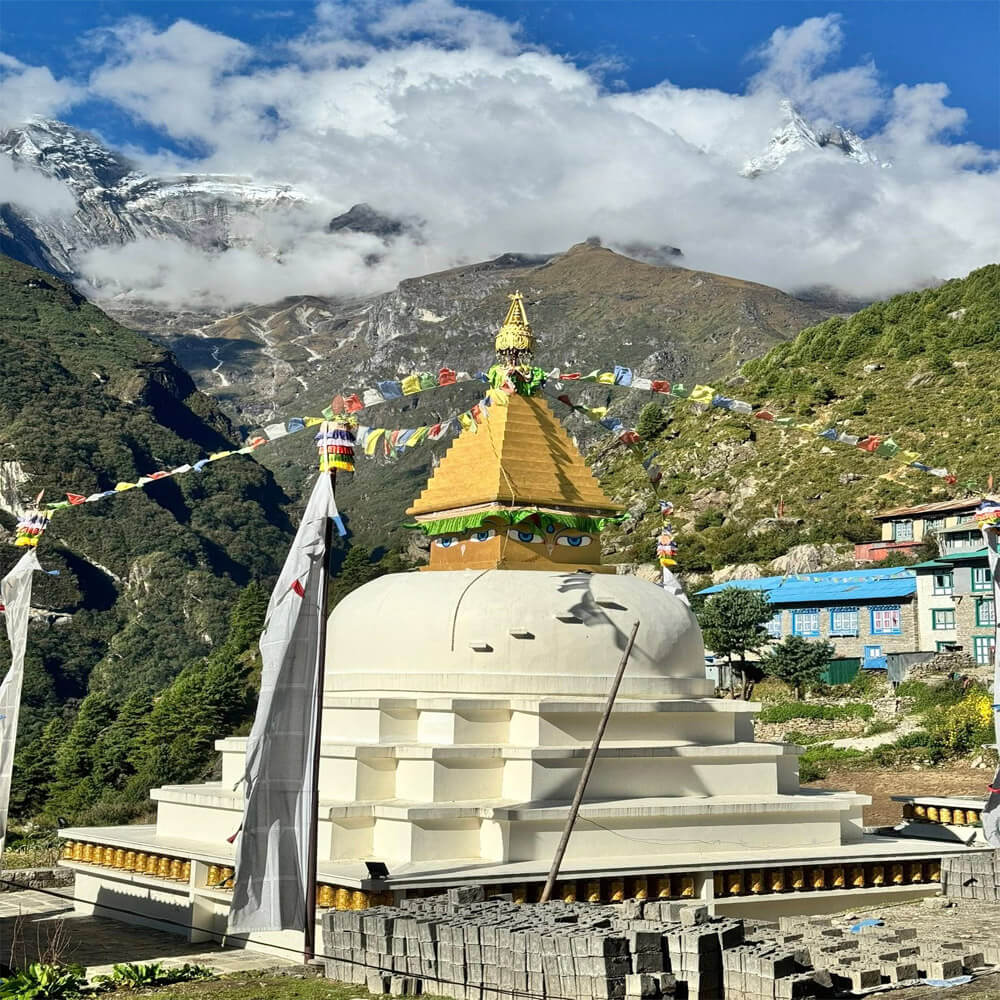
Although the walk does not reach severe altitudes, moderate altitude problems may develop around Tengboche (3,880m). Spending the night at intermediate elevations and gradually ascending will help your body adjust. Avoid hurrying during the trek and take breaks for water and snacks.
Mental Preparation
Patience and mental attention are required when trekking in high terrain. Understanding the difficulties and setting realistic expectations might help alleviate anxiety. Because the trek mixes walking and cultural exploration, having a curious mentality adds to the whole experience.
Guided vs Independent Trekking
Even on a simple trip, hiring a local guide can improve safety, provide cultural insights, and help with navigation. Organizations like Nepal Trekking Routes can assist with logistics, lodging, and emergency planning.
Difficulty Compared with Other Everest Treks
Understanding how the Everest View Trek's difficulty compares to other treks allows passengers to select the best option for their ability.
Comparison with Everest Base Camp Trek
The Everest Base Camp (EBC) trip is longer, steeper, and more physically demanding. It reaches 5,364 meters, has tougher ascents, and takes several days of acclimatization. In contrast, the Everest View Trek reaches a high elevation of 3,880 meters and has fewer daily walking hours, making it significantly less demanding.
Comparison with Gokyo Lakes Trek
The Gokyo Lakes Trek features steep ascents, high mountains such as Cho La Pass (5,420m), and tough terrain. The Everest View Trek is softer, with gradual hills and well-kept routes appropriate for beginners.
Comparison with Everest Three Passes Trek
The Everest Three Passes Trek is suitable for experienced trekkers and includes the Kongma La, Cho La, and Renjo La passes. It includes technical navigation, snow, and glacier crossings. The Everest View Trek bypasses technical aspects, instead emphasizing beautiful views and cultural experiences.
Why Everest View Trek Is Ideal for Beginners
The Everest View Trek is ideal for first-time trekkers, families, and those with limited time. It offers Himalayan exposure without putting too much strain on the body. Its moderate altitude, short duration, and excellent accommodations make it a viable alternative.
Balancing Experience and Effort
While the trek is less physically demanding, it nevertheless provides breathtaking views of Everest, Ama Dablam, and other peaks. Trekkers can experience Sherpa culture, Buddhist monasteries, and Himalayan landscapes without the strain of protracted high-altitude adventures.
Understanding preparatory needs and comparing difficulty levels allows travelers to confidently choose the Everest View Trek for a safe, manageable, and enjoyable Himalayan adventure.
Frequently Asked Question
How hard is Everest View Trek?
The Everest View Trek is considered easy to moderate. Trails are well-marked with gradual ascents and manageable daily distances, making it suitable for beginners, families, and travelers with basic fitness.
What is the highest point on the trek?
The trek reaches its highest point at Tengboche Monastery (3,880m). While altitude is moderate, trekkers may experience mild effects, so proper acclimatization is recommended.
How long does the trek take?
Typically, the trek takes 5–7 days, depending on the itinerary. Daily walks are 4–6 hours on average, making it less physically demanding than longer Everest region treks.
Do I need prior trekking experience?
No prior experience is required. The moderate difficulty means beginners and even older travelers can complete the trek with basic fitness and preparation.
When is the best season for the trek?
The ideal seasons are spring (March–May) and autumn (September–November). Clear skies and moderate temperatures make the trek safer and more enjoyable.
Conclusion: Everest View Trek difficulty
The Everest View Trek difficulty level is excellent for trekkers looking for a Himalayan adventure without excessive physical demands. With well-marked paths, gentle elevation rise, and manageable daily lengths, it is ideal for novices, families, and time-pressed travelers. The walk includes breathtaking views of Mount Everest, Ama Dablam, and other peaks, as well as cultural encounters at Sherpa communities and monasteries.
Weather can present small problems, but smart planning ensures a safe and pleasurable trip. Its short length and accessibility make it one of the most popular treks in the Everest region. Partnering with respected operators such as Nepal Trekking Routes ensures a flawless and memorable Everest expedition, complete with expert advice, bespoke itineraries, and logistical assistance.

